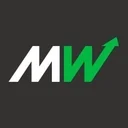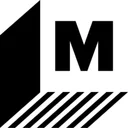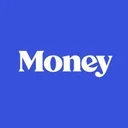How I Chased Savings Rates at the Same Bank
Opening a high-yield savings account was easy, but maintaining a high rate took more effort than expected.

Many, or all, of the products featured on this page are from our advertising partners who compensate us when you take certain actions on our website or click to take an action on their website. However, this does not influence our evaluations. Our opinions are our own. Here is a list of our partners and here's how we make money.
I’ve had a high-yield savings account at the same online bank for a decade. But if I hadn’t actively taken steps to maintain a truly “high-yield” rate, I would’ve missed out on thousands of dollars.
Until recently, I only remembered the effort to move my savings from a traditional bank to an online bank for a higher rate. But what I found from looking at years of bank statements surprised me. I didn’t open one high-yield savings account — I opened three, at different times, strategically. Each time my bank offered a new account with a better rate, I switched. And I’m glad I did: I would’ve earned at least $3,000 less in interest if I’d stuck with the first account.
Getting a high-yield savings rate has been a boon for my financial life. And I learned that staying on top of my bank’s rate changes and account offerings over time was crucial.
Why a high savings rate matters
Frustration drove me toward seeking a better rate. From my teenage to early adult years, my savings account had been at the same national bank as my parents. My December 2014 bank statement showed my rate as 0.03% APY, or annual percentage yield. The rate had rarely, if ever, budged. I earned about $1.40 in interest that year. Yikes.
Unfortunately, getting almost no interest on savings accounts is common. Nearly 2 in 5 Americans who have a savings account (39%) say their savings accounts barely earn any interest, according to an August 2025 NerdWallet survey, conducted online by The Harris Poll.
A good savings rate doesn’t just earn you more money. It also better defends your wallet against inflation, or the rising costs when you shop. While you can’t control inflation, you can find a high rate and be ready to chase better ones.
Rate-chasing tips based on my experience
1. Choose a high-yield account based on several factors
With a few years of personal finance writing under my belt, I decided to act on my own advice: I got a high-yield savings account.
This was 2015 when the national average rate for savings accounts was 0.06%, according to the Federal Deposit Insurance Corp. Banks typically take their cue to raise or drop savings rates from the Federal Reserve, which back then was keeping its benchmark rates at nearly zero. I researched online banks with rates near 1% APY on their high-yield savings accounts.
I also looked for and found the following:
No monthly fees for any account.
No requirements for the savings rate.
No foreign transaction fees on a debit card.
Helpful customer support by phone.
A $100 sign-up bonus sealed the deal for me. I opened a Capital One 360 Savings account in late September 2015. My rate was 0.75% annual percentage yield, and the bank sent me a tax document of my interest that year: $19.07. I had earned 13 times more interest in three months than I had the whole previous year.
2. Read the fine print on any bank promo
My 360 Savings rate rose to 1% APY in December 2017, in response to the Fed raising rates three times that year. I was satisfied until my bank sent an April 2018 promo email titled, “Ready to earn one of the nation’s highest savings rates?” I did not send that email to spam.
The Capital One 360 Money Market account earned 1.60% APY, but I found a catch on the website: This rate required a minimum balance of $10,000, and the rate for lower balances was 0.85%. Fortunately, I had no debts and lived with housemates in a big city, which meant I was able to meet the balance requirement to earn the higher rate.
I opened the account in May 2018, and enjoyed the rising rate environment for nearly two years. My 1.60% APY became 2.00% APY. But when the Fed cut rates in mid-2019, my rate fell. I didn’t plan to make changes until I discovered a better deal at my bank yet again.
3. Stay aware of changes to your bank’s offerings
A few months after my bank launched a new savings account, I double-checked my current rate to see if the change was worthwhile. It was.
In December 2019, I opened the Capital One 360 Performance Savings and my bank statement shows that my initial rate was 1.80% APY. That same month my money market account dropped below 1.60% APY. In a time when rates were falling, I jumped to a higher APY, but that victory was short-lived. My Performance Savings rate fell during the first year of the COVID-19 pandemic to a new low: 0.40% APY.
The true value of a high-yield savings account, though, is maximizing the peaks. After the Fed raised rates in 2022, my account eventually topped out at 4.35% APY. Some savings accounts had rates above 5%, but I liked what I was getting from my bank and the extra interest wasn’t worth the hassle of switching again.
My vigilance paid off
If I hadn’t been proactive about switching accounts, my APY would’ve stayed low. It's important to regularly check your rate and other rates in the market, even at your own bank — especially to confirm you're getting the rate you expected.
The Consumer Financial Protection Bureau sued Capital One in January 2025 for allegedly misrepresenting that the 360 Savings account was a “high interest” account. Capital One kept that account at 0.30% from December 2020 through at least August 2024, according to the CFPB. Meanwhile, the 360 Performance Savings option offered a rate that the CFPB stated was “more than 14 times higher than the 360 Savings rate.” The CFPB under new leadership soon dropped the lawsuit, but a class action lawsuit remains ongoing.
Getting a high-yield savings account remains one of my best money decisions of the past decade. But I can’t take my rate for granted. So I keep my eye on it — just in case.







